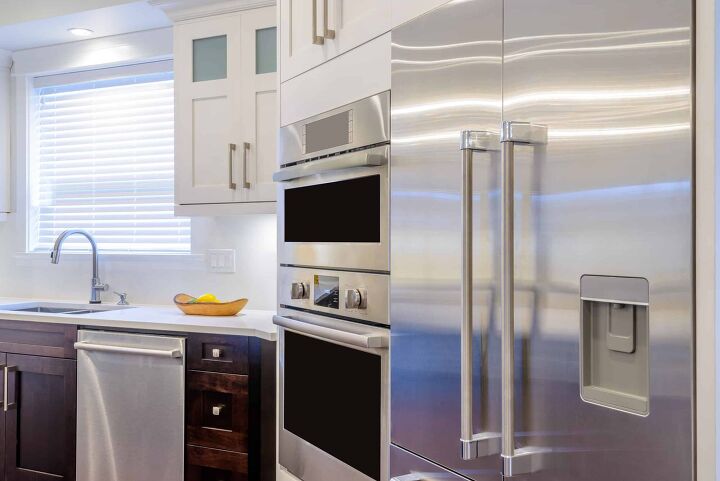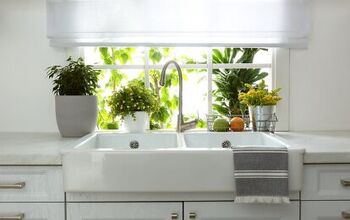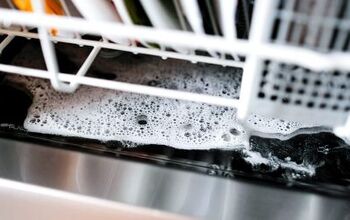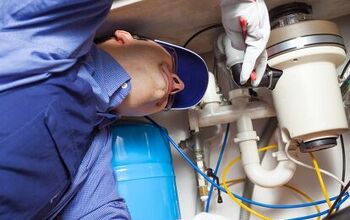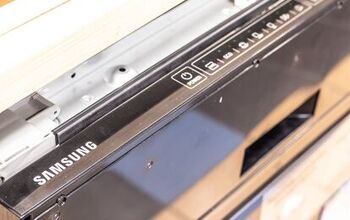Can A Dishwasher And Disposal Be On The Same Circuit?

A modern kitchen needs to be able to do a lot, sometimes without much space. There needs to be a way to store and prepare food, clean and store dishes, and dispose of trash.
When looking at the layout, the best kitchens will have important appliances within reach and at the right height for easy use. It is also important to consider factors like smoke dispersal and outlet placement, for health and safety reasons. Some appliances will simply use too much power to be safely used on the same circuit as other, also powerful appliances.
It is perfectly acceptable to wire the dishwasher and disposal on the same circuit, as long as the total combined load does not exceed 80% of the circuit capacity. Whether you want to seek the help of a professional electrician will depend on whether you want to hardwire your appliances or work with existing outlets.
Working with electricity can seem frightening, but this is a task you may be able to do yourself. Here are some tips on how to wire your dishwasher and disposal in the same location.
Do You Need to Hire an Electrician?
Get free, zero-commitment quotes from pro electricians near you.

How many connections does the dishwasher need?
Because it needs both water and electricity, wiring the dishwasher is the hardest part of the job. The dishwasher requires 3 different connections:
- The hot water usually comes in from the kitchen sink faucet. It does this by way of an outlet on the shutoff valve. This means that it will probably be easier to have the dishwasher as close to the sink as possible.
- The dishwasher has its own drain. This drain empties into the sink drain using a special fitting.
- The third connection is the electrical connection.
Considering Putting Your Dishwasher and Garbage Disposal on the Same Circuit?
If you are considering putting your dishwasher and garbage disposal on the same circuit, there are many factors to consider. These are some of the factors you should consider when making this decision:
Are you electronics-savvy?
If you want to do this yourself, then you should be able to do at least minimal electrical work. Even if you decide not to have your appliances hardwired but instead just use a pigtail to use the same outlet, there will be some technical work to do.
If you cannot do this yourself, call someone. A handyman can also assist you if you decide to get this done but do not have the required skills for installation.
Do you have the time?
Any home-work project will take some time. So it is important to determine if you really have time to complete a new project before you start.
You don’t want to be halfway through this kind of project when you realize you just don’t have the time. Then you won’t be able to use either appliance. It is important to plan ahead. Make sure you have the time and resources before beginning such a project.
Do you have enough outlet space?
If you already have a lot of appliances plugged in, you may not have many free outlets leftover. Especially if you have all of your appliances plugged in all the time.
You may not have the extra space to install a pigtail to put your dishwasher and garbage disposal on the same circuit outlet. However, that would be a good reason to hardwire your appliances, so that you do not have to worry about not having enough outlets for other appliances.
Should you use the outlets or have your appliances hardwired?
Once you have decided whether or not you want to put your dishwasher and garbage disposal on the same circuit, you have two options. The first option is to just use the outlet. The second option is to hardwire your appliances. We will explain each way here.
Using the Outlets
This is probably the easiest option to do yourself. If you choose to use the outlets, you will have to install a pigtail. You will then plug the pigtail into a three-prong receptacle. Do not use a three-prong receptacle directly behind the dishwasher.
Rather, use a three-prong receptacle in an adjacent cabinet. This is so that you can access the three-prong receptacle anytime you need to, without having to move the dishwasher.
Using a three-prong receptacle in a cabinet means that you will have to drill a hole in the cabinet so that the wire can come out. The drilled hole will need to be 1 inch in diameter to accommodate the plug. Since you will need to do some drilling, it is best to avoid a metal cabinet, if at all possible.
Having Your Appliances Hardwired
This option is even more hands-on. If you are not comfortable with electricity and wires, then call a professional for help. In the end, you should have the 12/2 electrical cable inside flexible metal sheathing. This metal sheathing will be attached to both the dishwasher and the electrical boxes on the wall.
Hardwiring means that your appliances will be connected more securely to the wall. You will not be able to pull out your dishwasher as far as you would if you had just plugged it in. It is a good idea to install wire clamps on both sides of the connection. This will prevent you from pulling the cable loose — or even pulling the cable out entirely — when you move your dishwasher.
What do you do when the dishwasher overflows?
Sometimes there are problems with the dishwasher that make it necessary to turn the power off quickly. Just using a different kind of detergent can cause an overflow, if you use the incorrect amount of cleaner.
If the dishwasher overflows, you will want to cut the power immediately. The next step is to stop the suds. You can do this by dousing the bubbles with some salt.
All you have to do then is mop up the mess. And mop up everywhere. Mop around the dishwasher, and then move the dishwasher and mop there as well. This is essential to prevent your floor from warping or mold from growing.
Do You Need to Hire an Electrician?
Get free, zero-commitment quotes from pro electricians near you.

Related Questions
What should you consider when looking for a new garbage disposal?
There are many things to consider regarding a garbage disposal. One thing to consider is the size. This will depend on you and your household needs. To determine this, you will have to factor in multiple things, such as:
- The size of your household;
- The frequency you will need to use the disposal;
- The food you usually prepare and how much waste it usually creates.
You will also need to consider what type of garbage disposal you are interested in buying. There are two main types of garbage disposals:
- Continuous Feed: This type of disposal is the easiest to use and thus the most common. As its name suggests, it allows for continuous feed. This means that you can just turn the cold water tap on, turn the disposal on, and continuously feed in your waste.
- Batch Feed: This type of disposal is less easy to use. As the name suggests, you can only put your waste in batches, not all at once. This type of disposal also requires the use of a stopper. Though a bit more work, batch feed disposals are considered safer than continuous feed disposals.
No! Don’t just throw anything in there! In fact, you should never put eggshells down your garbage disposal. This is because eggshells, when ground up in a garbage disposal, turn into tiny particles. These tiny particles can cause big problems. They can clog your garbage disposal or your pipes.
Other things to refrain from putting in your garbage disposal include:
- cooking oil or grease,
- coffee grounds,
- stringy fruits and vegetables,
- nuts and shells,
- pasta,
- rice,
- beans, or
- animal bones.
Putting these incorrect things in your garbage disposal can lead to multiple problems. If the items are too hard, they can cause your garbage disposal to break.
If the items are able to be broken down into tiny particles, they can cause your garbage disposal or pipes to clog. If the items take a while to grind up or are mushy, they may get stuck inside the garbage disposal unit, not be disposed of properly, and start to smell.

We are a team of passionate homeowners, home improvement pros, and DIY enthusiasts who enjoy sharing home improvement, housekeeping, decorating, and more with other homeowners! Whether you're looking for a step-by-step guide on fixing an appliance or the cost of installing a fence, we've here to help.
More by Upgraded Home Team



